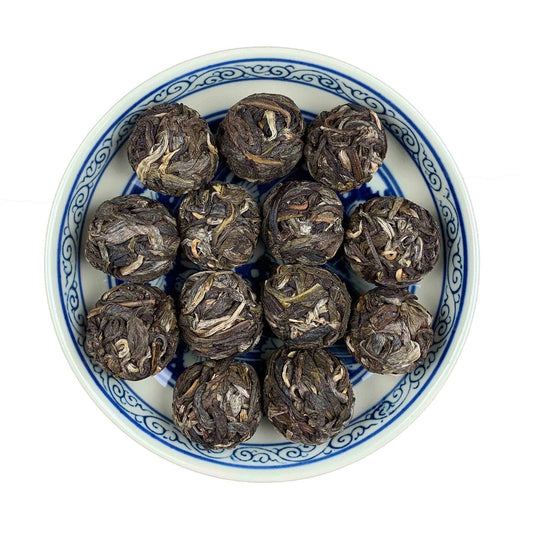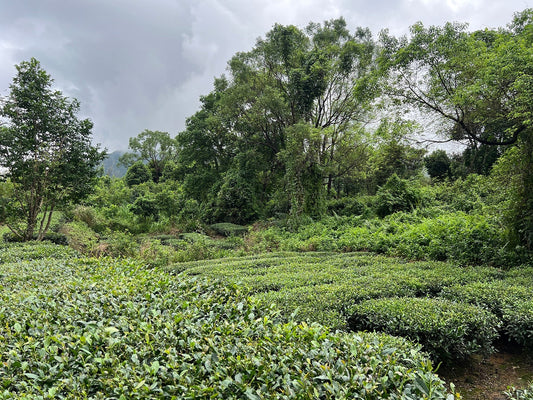Where to Buy the Best Chinese Oolong Tea: Authentic & Trusted Source
Are you searching for the best Chinese oolong tea? Have you scrolled through 47 pages of “premium oolong” on Amazon with no luck? You’re not alone! Data shows 87% of buyers waste $246 yearly on low-quality fakes. Though tea is the world’s second most consumed drink and oolong one of China’s most iconic teas, authentic premium oolong remains elusive.
Today, this guide delivers a trusted answer to end your long journey in pursuit of authentic oolong tea.
What Is the Best Oolong Tea?
Origin matters profoundly for all Chinese tea.
It transcends mere geography — representing a unique environment, soil, climate, and natural conditions. These elements collectively shape the tea’s distinctive flavor and soul. Thus, heartland origins remain the fundamental standard for defining the best tea.
Yet oolong tea’s uniqueness lies deeper:
It relies not only on origin but also on exceptional tea-making craftsmanship. An industry truth states: “Only oolong tea has true masters.” This is because oolong tea’s intricate processing requires a blend of science and art.

→【Explore All Single-Origin Oolong Teas】
Oolong Tea Origins: Exploring the Core Production Areas
Oolong tea is grown in specific regions of China characterized by favorable climate, soil, and mountainous terrain. Traditionally, only China (especially southern regions) is believed to possess the natural environment and craftsmanship conditions required for producing high-quality oolong tea. Below are the four most representative core production areas:
1. Fujian · Wuyi Mountain — The Earliest Birthplace of Oolong Tea
The Classic of Tea (Cha Jing), compiled during the Tang Dynasty (around 760 AD), remains the most influential tea encyclopedia to date. It records that “Wuyi tea uses a unique semi-fermentation process,” which is considered the earliest written reference to what would later become oolong tea. To this day, oolong tea is still understood as “semi-fermented tea.”
Signature teas: Da Hong Pao (Big Red Robe Oolong), Shui Xian (Narcissus Oolong), Rou Gui (Cinnamon Oolong)
Flavor profile: Heavily fermented and roasted, ideal for those who enjoy a rich body and toasty aroma.
Geographical features: Located in northern Fujian (Minbei region), Wuyi Mountain is characterized by its unique Danxia landforms and mineral-rich rocky soil. These natural conditions give the tea its signature rock rhyme (Yan Yun), which is why it’s also known as “Wuyi Rock Oolong Tea” — one of the most prestigious categories of oolong tea.

→【Wuyi Rock Collection: Mineral & Charcoal-Roasted】
2. Fujian · Anxi — The Cradle of Systematic Oolong Tea Craftsmanship
During the Yongzheng reign of the Qing Dynasty (around 1725 AD), Anxi began developing a comprehensive oolong tea-making process based on its unique local tea variety, Tie Guan Yin. This systemized method — featuring key steps like rolling, shaking (yaoqing), and roasting — not only enriched oolong tea processing techniques but also laid the foundation for the standardization and long-term evolution of oolong tea production.
Signature tea: Tie Guan Yin (also known as Ti Kuan Yin Tea)
Flavor profile: Known for light fermentation and medium roasting, Anxi oolongs represent the “fragrant style” of oolong tea, ideal for those who enjoy floral and refreshing aromas.
Geographical features: Situated in the hilly southwest of Fujian, Anxi features high elevations, organically rich yellow soils, frequent mist, and notable day-night temperature differences. Its mild climate with distinct seasons and evenly distributed rainfall creates ideal conditions for cultivating premium oolong tea — particularly the celebrated Tie Guan Yin Oolong Tea.

→【Tie Guan Yin Collection: Orchid Fragrance】
3. Guangdong · Phoenix Mountain — Home of China’s Top-Rated Oolong Tea
Phoenix Dan Cong Oolong tea originated in the late Ming to early Qing dynasty (early 17th century). With the rise of tea culture, a distinctive brewing tradition known as gongfu tea emerged in this region by the early 18th century, making Chaozhou one of the recognized birthplaces of this elaborate tea preparation method.
This core tea-producing area is known for its rich diversity of tea tree cultivars. Local tea farmers adhere to a traditional craft of harvesting and processing leaves from individual tea trees — hence the name Dan Cong, meaning “single bush.” Celebrated for its intensely aromatic profile, Phoenix Dan Cong is often praised as the “perfume of tea.”
Signature teas: Dan Cong Oolong Tea — including Mi Lan Xiang (Honey Orchid), Ya Shi Xiang (Duck Shit Aroma), and Yu Lan Xiang (Magnolia Aroma), among others.
Flavor profile: Light roast teas offer a “floating aroma” (shui piao xiang) that drifts into the nose; heavily roasted teas present a “contained aroma” (shui han xiang) that bursts in the mouth. Medium roast strikes a balance between the two, showcasing the full spectrum of fragrance-rich, clear, and robust oolong styles.
Geographical features: Phoenix Mountain in Chaozhou, eastern Guangdong, is one of the core regions for authentic oolong tea. Its volcanic soil nurtures many old tea trees, some over a century old, with a few even exceeding 600 years in age. The area’s unique mountain microclimate, combined with generations of artisanal craftsmanship, has shaped the distinctive character of this legendary tea region.

→【Dan Cong Oolong Selection: Centuries-Old Trees】
4. Taiwan Oolong Tea — The Modern Innovator of Fragrance & Craftsmanship
Taiwan’s oolong cultivation began in the 19th century with tea plants introduced from Anxi, Fujian. Local growers adapted these cultivars to Taiwan’s unique environment through innovative techniques, giving rise to a wide range of distinctive Taiwanese oolong styles. Major production areas include Nantou, Alishan, Shanlinxi, Lishan, and Dayuling — renowned for their high-mountain teas.
Signature teas: Dong Ding Oolong, Alishan Oolong, Oriental Beauty
Flavor profile: Typically lightly fermented and roasted, Taiwanese oolongs are celebrated for their sweet, delicate flavors and refined taste, often described as smooth, floral, and elegant.
Geographical features: Known as the “Treasure Island,” Taiwan is surrounded by sea and dominated by a central mountain range. Its varied elevations and cool, misty climates provide ideal conditions for high-mountain tea cultivation. Most Taiwanese oolong teas are grown at altitudes between 600 and 1,500 meters.

→【Taiwan High-Mountain Oolong: Alpine Mist Elegance】
The Truth Behind Oolong Tea
Understand that the terroir of these core production areas is irreplaceable, tea trees are limited in number, and true masters who inherit ancient tea-making methods are few and far between. The scarcity of oolong tea is a synthesis of natural endowment and artisanal craftsmanship.
This raises a practical question: how can limited production capacity meet the global market’s strong demand for “authentic” oolong tea?The answer is already written in every cup of tea that has lost its regional flavor and traditional cultural essence.
In fact, many tea trees from the original producing areas have been transplanted to other regions, where large-scale industrial production is employed in pursuit of the “semi-fermented” flavor.
But we all understand a simple logic: not only in tea, but for any product priced too low, it is mostly the result of high output pushing down costs. And this often means a sacrifice of quality.
For tea, an industry that requires accumulated experience and professional knowledge to identify and practice, these are not industry secrets. Rather, they are cognitive blind spots caused by some merchants’ lack of passion, which misleads consumers.
Authentic and Trusted Source of Oolong Tea
In an age of fragmented information and marketing noise, we choose to return to the source — using authentic origins and time-honored craftsmanship to build a bridge of trust.
Today, we warmly invite you to explore a trusted online store for authentic Chinese oolong tea: Chinese Tea Group, a brand born from a traditional tea house and grounded in professionalism.This brand is not one person’s story — it is a shared vision, brought to life by dedicated artisans and tea lovers united by passion and a commitment to heritage.
That’s why we believe: a brand is never built by one alone, but lifted by every choice and every ounce of trust.Over the years, we’ve traveled deep into China’s core tea regions, sourcing a wide range of oolong teas grown with traditional, pesticide-free practices and refined through artisanal craftsmanship.
Driven by passion and perfected through persistence, our approach brings the true taste of origin-sourced oolong tea to tea lovers around the world.We uphold transparency at every step, ensuring that you always know what you're drinking and where it comes from.We also offer expert tea consultants to help you explore flavor profiles and find the oolong that genuinely speaks to your palate.
Start your aesthetic tea journey today — from the mineral intensity of Wuyi rock tea, the orchid-laced sweetness of Anxi Tie Guan Yin, and the penetrating honey aroma of Phoenix Dan Cong, to the cool, lingering fragrance of Taiwanese oolong...
We believe a cup of tea is more than just taste — it is a profound encounter between land, craft, and time.




